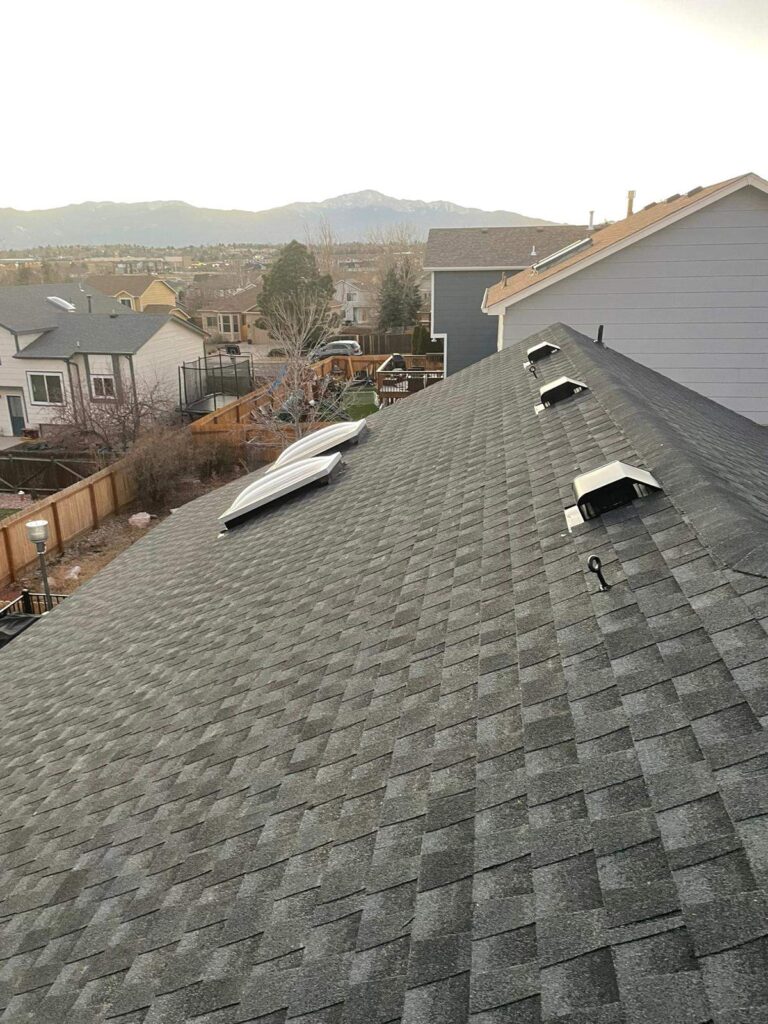Selecting the appropriate roofing material is a crucial choice that influences a home’s longevity, upkeep requirements, and visual appeal. Slate roofing is a highly desirable option due to its longevity and timeless appeal, but homeowners must decide between natural slate , known for its durability and classic look, and synthetic slate , which offers affordability and ease of installation.
This guide will compare these two materials in detail, helping homeowners determine which option best suits their needs.
Natural Slate Roofing: A Classic and Durable Choice
What Is Natural Slate Roofing?
Natural slate is a luxury roofing material crafted from fine-grained stone, renowned for its durability and centuries-old use in construction. It is quarried, cut into thin pieces, and installed to create a durable, elegant roof.
Advantages of Natural Slate
✔ Extremely Long Lifespan – With proper installation and care, natural slate can last 100 years or more , making it one of the longest-lasting roofing options.
✔ Distinctive Aesthetic – Every natural slate tile is unique, offering variations in texture and color that enhance a home’s visual appeal.
✔ Exceptional Weather Resistance – Slate withstands high winds, heavy snow, hail, and even fire , offering outstanding protection.
✔ Energy Efficiency – Its natural insulation properties help maintain comfortable indoor temperatures and reduce energy costs.
✔ Eco-Friendly – As a natural material, slate has a minimal environmental footprint and is fully recyclable once it reaches the end of its lifespan.
Drawbacks of Natural Slate
❌ High Initial Investment – Natural slate is one of the costliest roofing options due to both material expenses and specialized labor requirements.
❌ Heavy Weight – Weighing 800–1,500 pounds per 100 square feet , it may require additional structural reinforcement.
❌ Difficult Installation – Requires skilled professionals, which increases installation time and labor costs.
Synthetic Slate Roofing: A Contemporary Solution
Understanding Synthetic Slate Roofing
Synthetic slate is manufactured from materials like polymers, rubber, and recycled plastics. It is designed to replicate the look of natural slate while offering a more lightweight and affordable option.
Advantages of Synthetic Slate
✔ Lower Cost – Synthetic slate typically costs 30-50% less than natural slate, making it a more budget-friendly option.
✔ Lighter Weight – Weighing far less than natural slate, synthetic roofing does not require additional structural support.
✔ Easier Installation – Can be installed using standard roofing techniques, reducing labor costs and project time.
✔ Impact Resistance – More resistant to cracking than natural slate, especially under impact.
✔ Long Manufacturer Warranties – Many synthetic slate products come with 50-year or even lifetime warranties .
Disadvantages of Synthetic Slate
❌ Shorter Lifespan – Typically lasts 40–50 years , which is significantly less than natural slate.
❌ Less Authentic Appearance – While designed to resemble natural slate, it lacks the texture and variation of real stone.
❌ Potential UV Degradation – Some synthetic materials may fade or become brittle with long-term sun exposure.
Natural slate is the clear winner in long-term durability , but synthetic slate provides strong weather resistance with easier maintenance.
Although natural slate is more expensive upfront , its longevity often results in lower long-term costs compared to synthetic alternatives.
Maintenance Requirements
Natural Slate Roof Maintenance
- Periodic inspections are necessary to identify damaged or missing tiles.
- Occasional repairs may be needed to replace broken or shifted slates.
- In humid environments, moss and algae may need to be cleaned off.
Synthetic Slate Roof Maintenance
- Minimal maintenance is required, but periodic cleaning helps prevent dirt buildup.
- Some synthetic materials may fade over time , requiring replacement for cosmetic reasons.
- Routine inspections ensure there are no cracked or damaged tiles.
Natural slate is the most sustainable option , while synthetic slate provides an eco-friendly alternative through the use of recycled materials .
Choosing the Right Slate Roofing for Your Home
Opt for Natural Slate If:
✅ You want a roof that lasts a lifetime (100+ years).
✅ You prioritize an authentic, high-end look .
✅ Your home can support the weight of natural slate.
Go With Synthetic Slate If:
✅ You need a cost-effective alternative to natural slate.
✅ You prefer a lightweight roofing material that doesn’t require extra reinforcement.
✅ You want a low-maintenance option with easier installation.
For homeowners in Denver, Colorado , looking for expert roofers in Denver , Tried and True Roofing provides professional installation services tailored to your needs. Whether you choose the timeless durability of natural slate or the affordability of synthetic slate , our experienced team ensures top-quality workmanship and lasting results.
Conclusion
Both natural and synthetic slate roofing offer durability, beauty, and protection for your home. Natural slate remains the superior choice for those seeking long-lasting quality , while synthetic slate is a more budget-friendly, lightweight alternative with easier maintenance.
By weighing cost, longevity, maintenance, and structural requirements , homeowners can make the best decision for their property. Regardless of the choice, investing in a professionally installed slate roof ensures lasting value, energy efficiency, and exceptional curb appeal for years to come.
